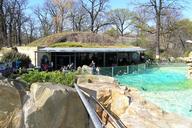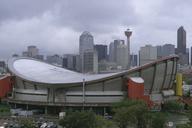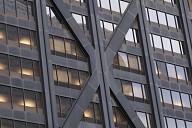New home for snow leopards in Stuttgart's Wilhelma zoo
Stuttgart's Wilhelma zoo now features another attraction: At the beginning of March, the snow leopards moved in to their exclusive new home on the slope across polar bears and beavers. At 700 square meters, the new enclosure is four times as big as the large cats' previous pad. An impressive stainless steel mesh construction spans the enclosure, affording barrier-free views of the habitat in which the animals can really feel as if they are living out in the open.
Media
With more than one and a half million visitors a year, the Wilhelma is one of the most visited zoos in Germany and with its 1,200 species is also one of the most diverse zoological gardens in the world. Its particular attraction is that it successfully combines a zoo with botanical gardens and a historic park built on Moorish lines. The Wilhelma is constantly investing in both nature and wildlife conservation – now one of the main duties of modern zoos. And its most recent contribution to this conservation is the new home for the snow leopards.
The new enclosure in the southern part of the Wilhelma harmoniously fits into the whole topography of the park. A delicate, transparent mesh construction is virtually invisible as it spans the 700 square meter domain of the snow leopards. For the roof and wall mesh – totaling around 1,500 square meters – the planners from Carl Stahl Architecture chose the stainless steel mesh X-TEND Colours with black polymer coating. The dark color helps the mesh fade into the background, making it virtually imperceptible. This means visitors are in the middle of the action and can watch the animals without any disturbing obstacles. At the same time, the mesh width of 60 millimeters provides a sense of security.
Active wildlife conservation
The enclosure on the slope has put a peripheral area of the zoo to good use but has also given a near-natural habitat to the feline climbers who originate from the mountainous areas of Central Asia and the Himalayas. There are only around 4,000 of these graceful large cats left in the wild, which means they figure as a threatened species in the red list published by The World Conservation Union. The new enclosure in the Wilhelma offers perfect conditions to re-embark, after a break, on the snow leopard breeding program. The area with its streams, ponds and climbing possibilities is thus not only inspired by the natural habitat of the mountain cats. It can in fact be divided into three outer enclosures to separate the animals so that cubs can stay for a while after they have been weaned from their mother. The vertical separating mesh stretches freely between the roof mesh and the ground and is hardly noticeable in the overall construction. Unobtrusive access points integrated in the separating mesh link the three enclosures. Inspection manholes make it possible for the zoo keepers to access the enclosure from the outside to bring in soil as well as larger objects such as tree trunks for the animals to climb on.
Minimal construction, maximum benefit
Five inner pylons and 13 outer posts made of powder-coated steel carry the undulating roof mesh. The planners skillfully managed to include the original trees, once again making an important contribution to the environment. Three trees rise through the mesh; Carl Stahl Architecture adapted the mesh geometry to suit two others. The experts met the challenges of the sloped site with ingenious planning which resulted in a minimal number of constructional components. Thanks to the transparent look of the mesh, they also succeeded in creating a natural visual link between the Wilhelma and the immediately adjacent Rosensteinpark, an extensive park which is officially preserved as a historical monument.
The snow leopard enclosure is now the sixth project featuring stainless steel mesh constructions by Carl Stahl Architecture in the Wilhelma. Along with the crocodile hall with its double-row balustrade made of blackened X-TEND and the balustrade of the sea lion enclosure, 3,000 square meters of stainless steel mesh also span the impressive outdoor enclosure of the Primate House opened in 2013.
References
Structure Types
- About this
data sheet - Product-ID
7596 - Published on:
15/10/2018 - Last updated on:
15/10/2018

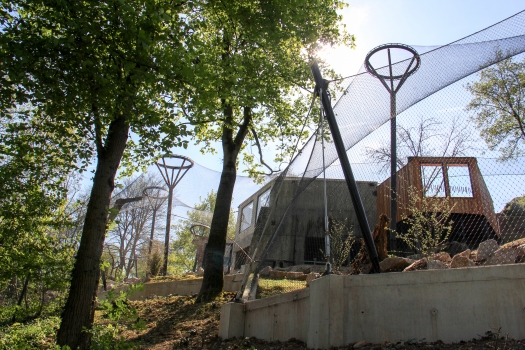
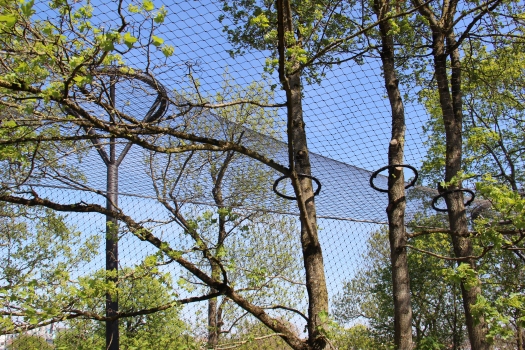
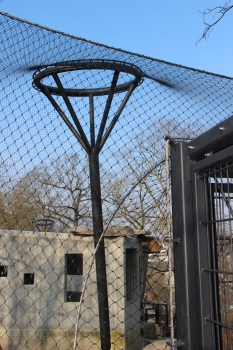
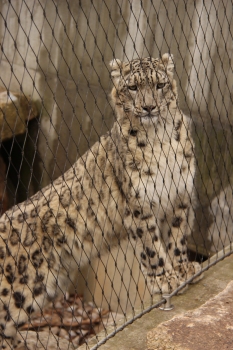
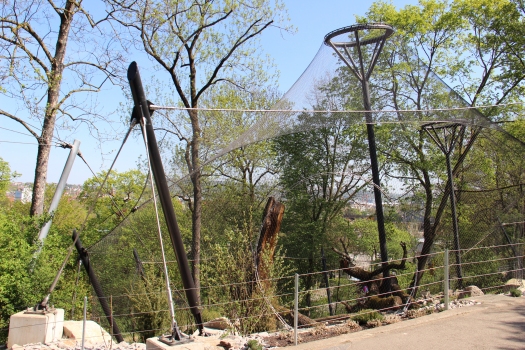
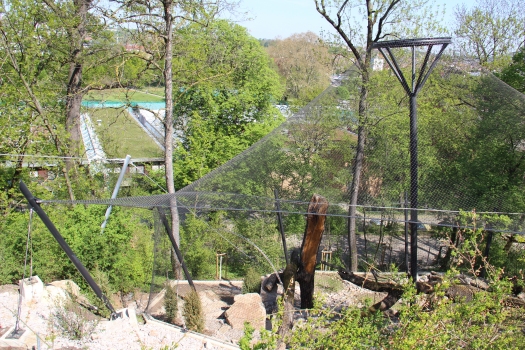
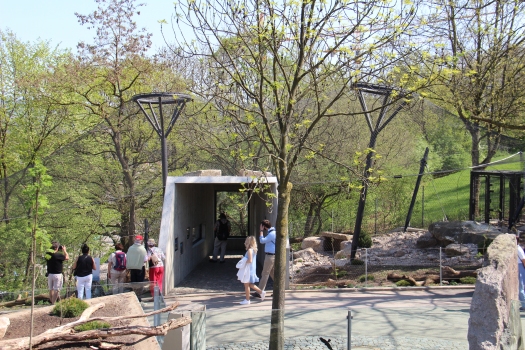
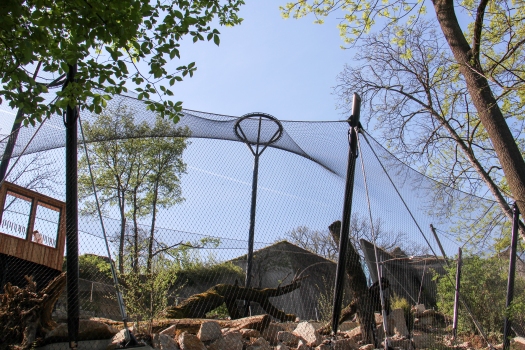
 Carl Stahl ARC GmbH
Carl Stahl ARC GmbH
